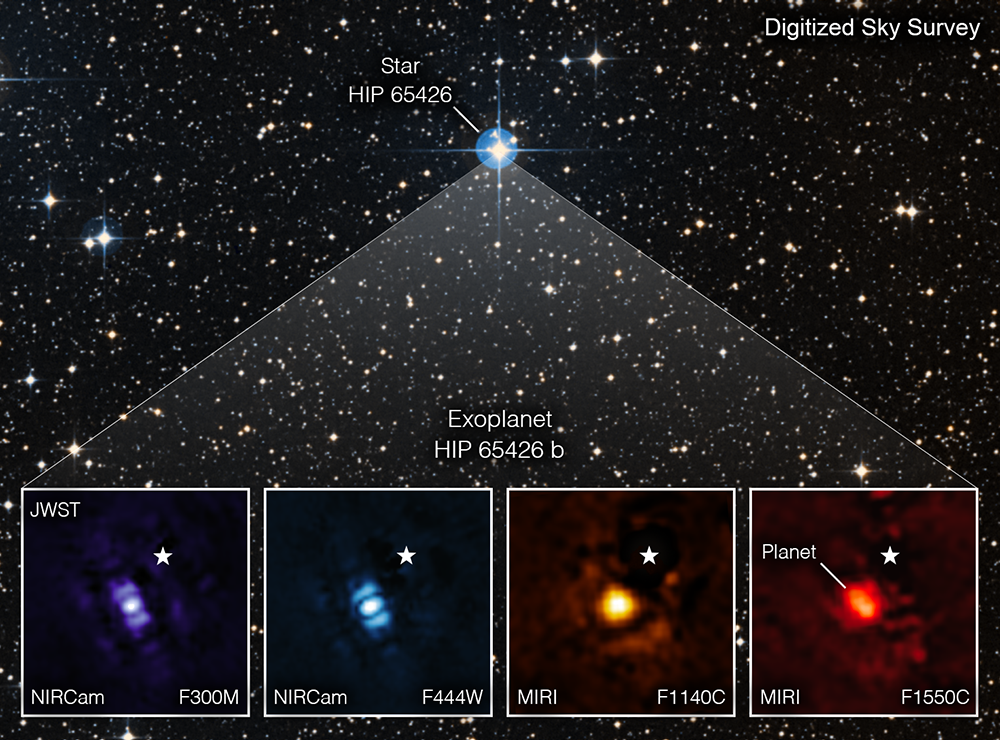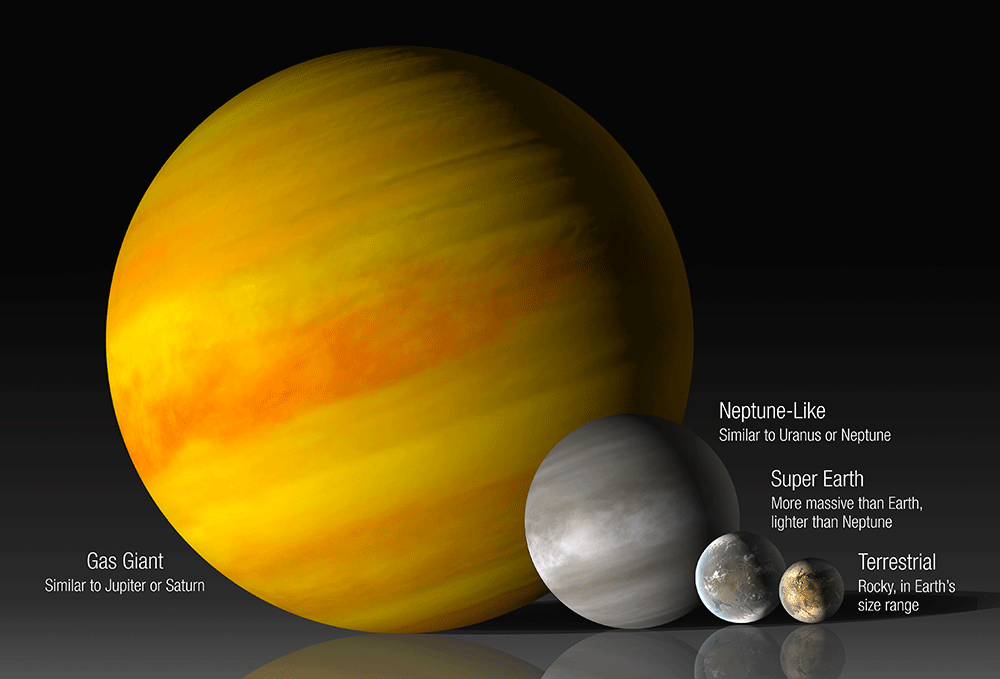
SEPTEMBER 20, 2022 — The universe continues to unfold and Thayne Currie, UTSA associate professor of astrophysics, is thrilled with the first-ever images of distant worlds seen by the James Webb Science Telescope (JWST).
As a member of the JWST Early Release Science Program in Exoplanet Direct Imaging, Currie is among a handful of professors in the UTSA College of Sciences’ Department of Physics and Astronomy who are taking part in unveiling the galactic discoveries realized by the JWST.
JWST recently captured the exoplanet, called HIP 65426 b, through several different light filters. An exoplanet—also called an extrasolar planet—is a planet outside a solar system that orbits another star.

The James Webb Space Telescope recently captured the exoplanet HIP 65426 b through several different light filters.
Over 5,000 exoplanets have now been discovered. Exoplanets have a wide range of properties from massive gas giant planets like Jupiter and Saturn, ice giants like Neptune, and terrestrial planets primarily comprised of silicates or metals.
Like Jupiter, the JWST-imaged exoplanet HIP 65426 b is a gas giant planet. However, it is about seven times more massive than Jupiter, almost 50% larger in radius, and orbits 18 times further from its star than Jupiter orbits from the Sun. While planets within the solar system are about 4.5 billion years old, HIP 65426 b is likely a newly formed planet aged around 10 to 20 million years old.
Observing an exoplanet in a range of various wavelengths, Currie explained, sheds light on information about its composition and provides better insights on the formation and evolution of planets within our solar system.
“For thousands of years, we only knew about planets in our own solar system. In the last 30 years, we have discovered planets around other stars; about 20 have been imaged,” Currie said. “This recent image is captured using mid-infrared wavelengths that give us better clues about its luminosity, temperature and other atmospheric properties.”

This image provided by NASA shows the different types of exoplanet types that are known to exist.
The JWST launched last year on Christmas Day aboard a rocket in French Guinea. The telescope is the largest and most powerful space science telescope in (and out of) the world, efficiently producing images of space with the sharpest details. When it was being designed 25 years ago, none of the exoplanets that are known today had been discovered yet. Now, scientists are able to study atmospheric compositions in depth, discovering properties like water vapor.
In the future, Currie hopes to use the JWST to reveal images of exoplanets more like those in our solar system and potentially habitable worlds.
“The direct-imaging capabilities of the Webb Telescope may be even more powerful than we anticipated, allowing us to study planets at wavelengths where it is difficult to image them from the ground,” Currie said. “I’m excited that we can bring the opportunity to study exoplanets using NASA telescopes like the Webb into the classroom for students to discover the universe.”
UTSA Today is produced by University Communications and Marketing, the official news source of The University of Texas at San Antonio. Send your feedback to news@utsa.edu. Keep up-to-date on UTSA news by visiting UTSA Today. Connect with UTSA online at Facebook, Twitter, Youtube and Instagram.
Move In To COLFA is strongly recommended for new students in COLFA. It gives you the chance to learn about the Student Success Center, campus resources and meet new friends!
Academic Classroom: Lecture Hall (MH 2.01.10,) McKinney Humanities BldgWe invite you to join us for Birds Up! Downtown, an exciting welcome back event designed to connect students with the different departments at the Downtown Campus. Students will have the opportunity to learn about some of the departments on campus, gain access to different resources, and collect some giveaways!
Bill Miller PlazaCome and celebrate this year's homecoming at the Downtown Campus with food, games, giveaways, music, and more. We look forward to seeing your Roadrunner Spirit!
Bill Miller PlazaThe University of Texas at San Antonio is dedicated to the advancement of knowledge through research and discovery, teaching and learning, community engagement and public service. As an institution of access and excellence, UTSA embraces multicultural traditions and serves as a center for intellectual and creative resources as well as a catalyst for socioeconomic development and the commercialization of intellectual property - for Texas, the nation and the world.
To be a premier public research university, providing access to educational excellence and preparing citizen leaders for the global environment.
We encourage an environment of dialogue and discovery, where integrity, excellence, respect, collaboration and innovation are fostered.